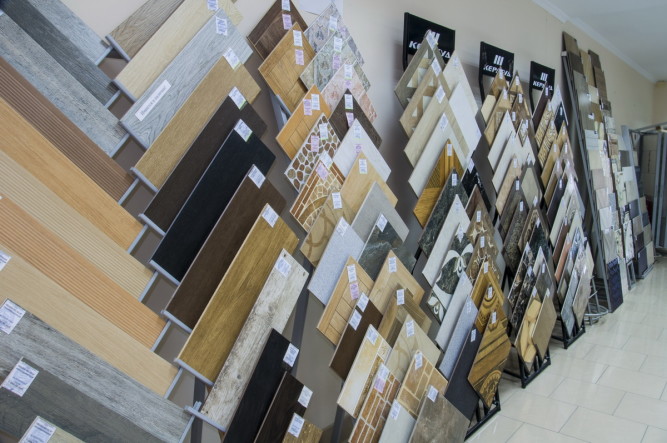Laying paving slabs on a concrete base: technology
Laying paving slabs on a concrete base with your own hands - a great way to improve the area around the house and create a stable area for car parking. This technology differs from the more common with the use of cement-sand cushion. Let's find out, whether it is possible to lay a tile on a concrete basis in general and how it is better to make it.
An excellent choice for landscaping
Types of paving slabs
- pavement;
- wave;
- rhombus;
- clover;
- cloudlet;
- Gzhelka;
- fleece;
- honeycombs;
- etc.
varieties of tiles
It is also important to distinguish the material by method of production: vibrocast or vibropressed. in addition, natural stone is used.
To deal with the issue, whether it is possible to lay paving slabs on concrete, the strengths and weaknesses of this method should be considered.
advantages of the method
This process, in essence, resembles the principle of facing work with ordinary tiles. You will need a strong stable base and cement-sand mortar to fix the elements on the surface.
The technology has a number of advantages:
- Strength. The concrete platform is able to withstand a huge load. It breaks down less over time and "does not spread".
- Durability. Laying will last much longer, than with the standard method of fixing elements.
- Limited shrinkage. Subsequently, the sand cushion subsides, which leads to the destruction of the track. This risk is minimized when installed on a concrete base.
- Precipitation resistance. Solution, unlike sand it is practically not washed away under the influence of water. In addition, it better resists freezing cycles.
- Reliability. Hardened glue in conjunction with concrete is much more reliable than sand sprinkling on a pillow of gravel.
Strength is the main advantage
Lay the tiles with mortar, therefore, it will be almost impossible to remake the work in the future.
preparation of the base
First, a deepening of the soil. Usually enough 20-25 cm to accommodate all layers of materials in the right amount. Once the top soil is removed, it is compacted. To do this, use special tools and devices. If water was used during compaction, before continuing, wait for the earth to dry.
Immediately after that, install the curbs, as they go a long way, than tile. For stability the layer of rubble approximately in thickness is preliminary filled up 5 cm. Then the curb is fixed on the sides of the sidewalk and the laying of rubble continues. The total layer of material should be close 15-20 cm, depending on, what load is planned on the surface in the future. Lay a waterproofing film approximately in the middle. This will prevent the foundation from leaching out and moisture from entering the ground.
River sand is used to seal the substrate and fill cavities. It is poured in a small layer, in contrast to the traditional approach. Vibrating system is used to achieve the best effect.
The scheme of the device of a basis under paving slabs
To strengthen the concrete, lay reinforcement. This is especially true for large platforms and driveways. The individual rods are placed perpendicularly and tied together with wire. They also use ready-made mesh, attached to the side rods of larger diameter. To make a solution, you will need quality raw materials: cement, sand, water, screenings and lime. The mass is poured on the prepared base, vibrates, leveled and left to dry under the film. Before you start finishing work, make sure, that there are no voids at the base.
Laying tiles
The technology consists in the use of cement-sand mortar or frost-resistant tile adhesive, intended for external facing.
Apply the finished mixture to the concrete with a straight spatula. One event will be enough 1 m2 of cultivated area. Laying is made according to the chosen scheme and move "on itself", so that the tile does not float under the weight of the master. First, fix the whole pieces, and then add sliced pieces along the edges. Align the tile with a bar or mallet. Joints are minimized and then covered with sand and cement.
Use the level to check, whether the installation is performed correctly. The surface should provide a gutter slope 2 degrees of 1 meter.
If the laying is done correctly, you will receive a strong and steady covering of paths and platforms on your site.



